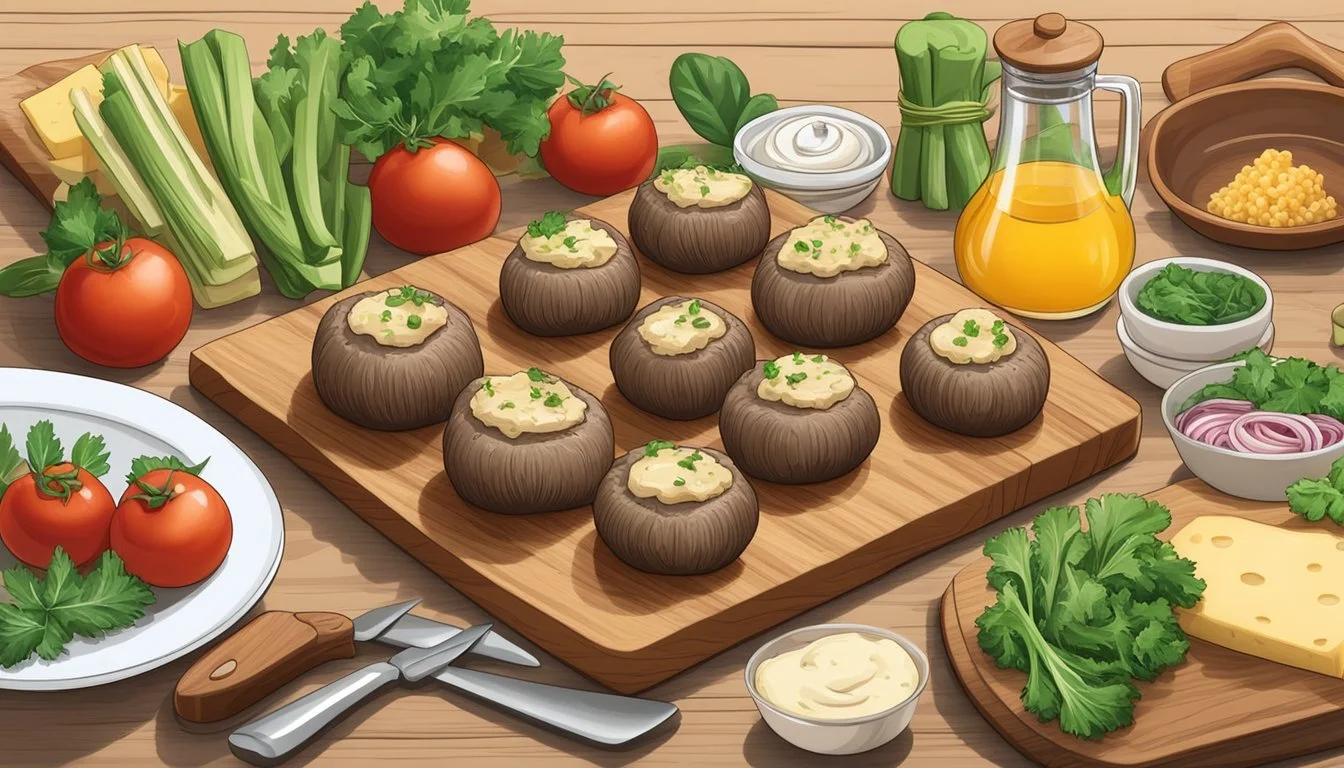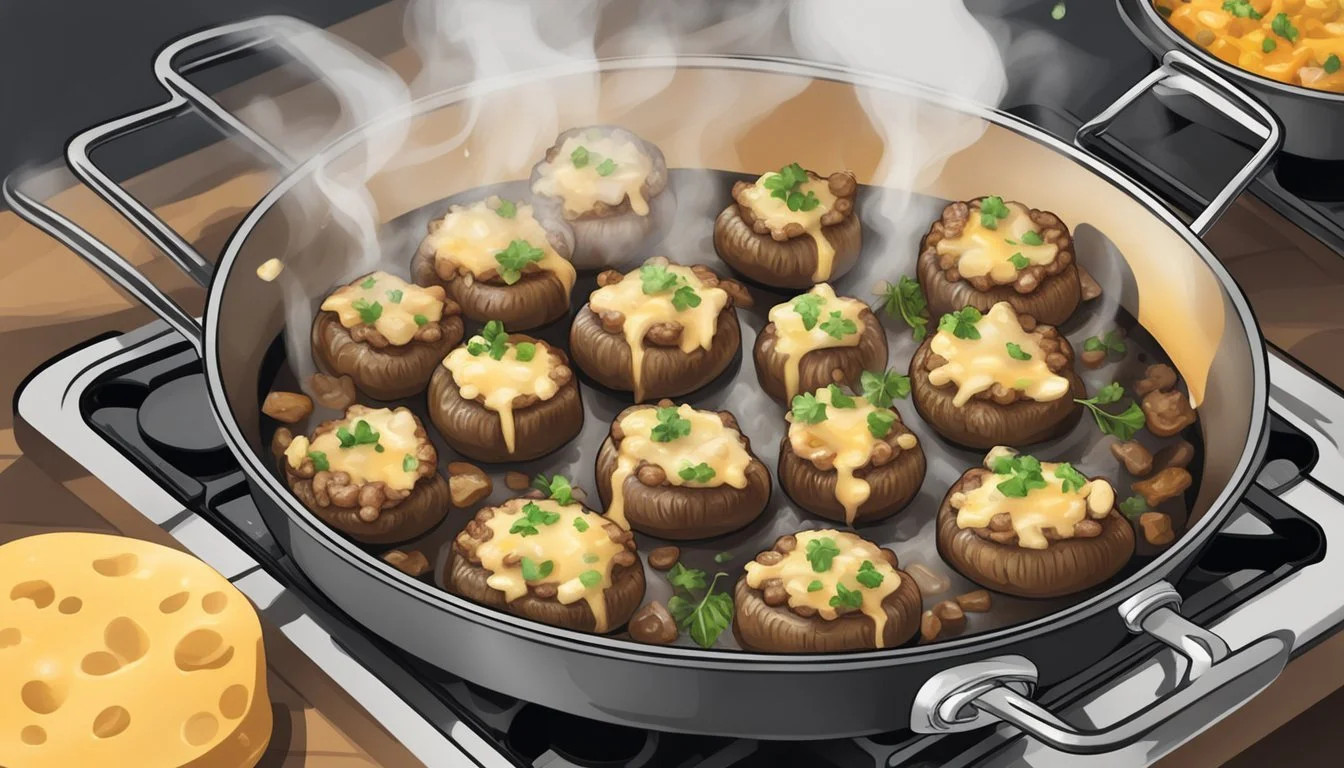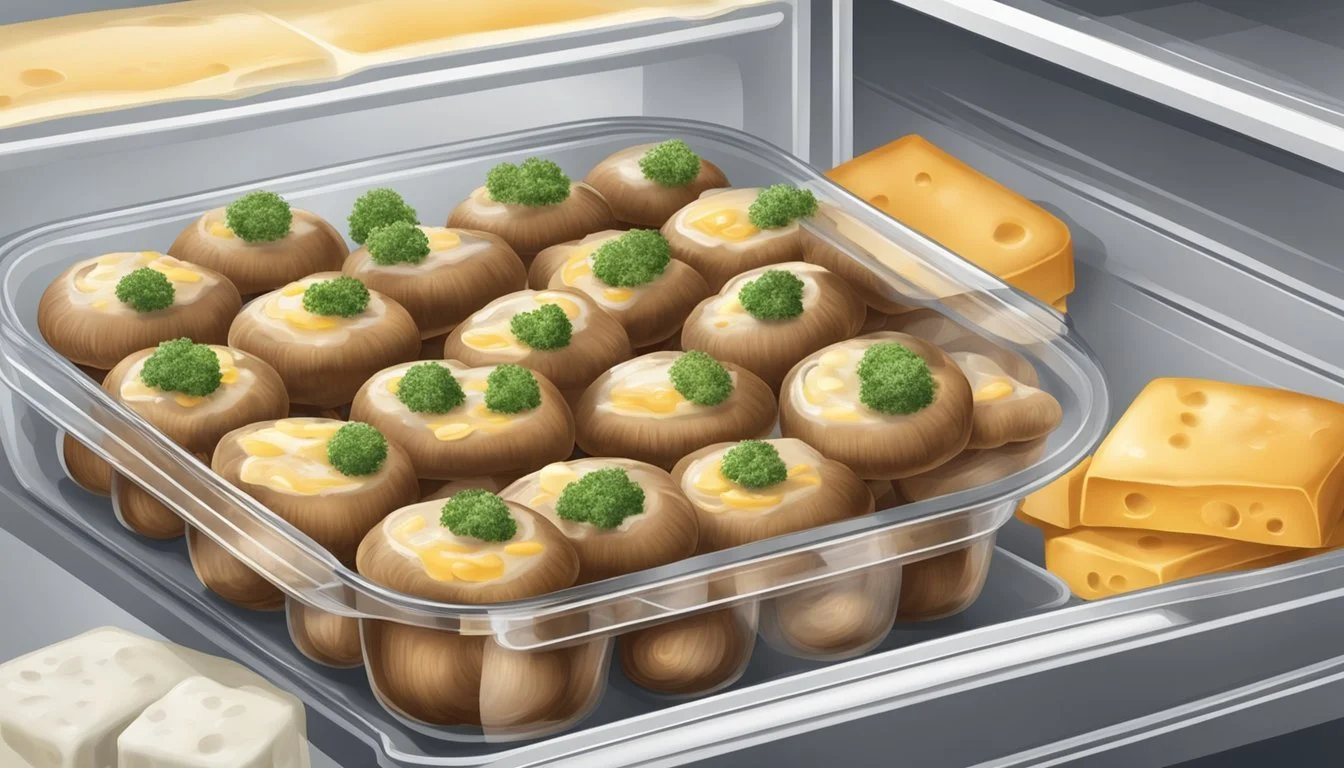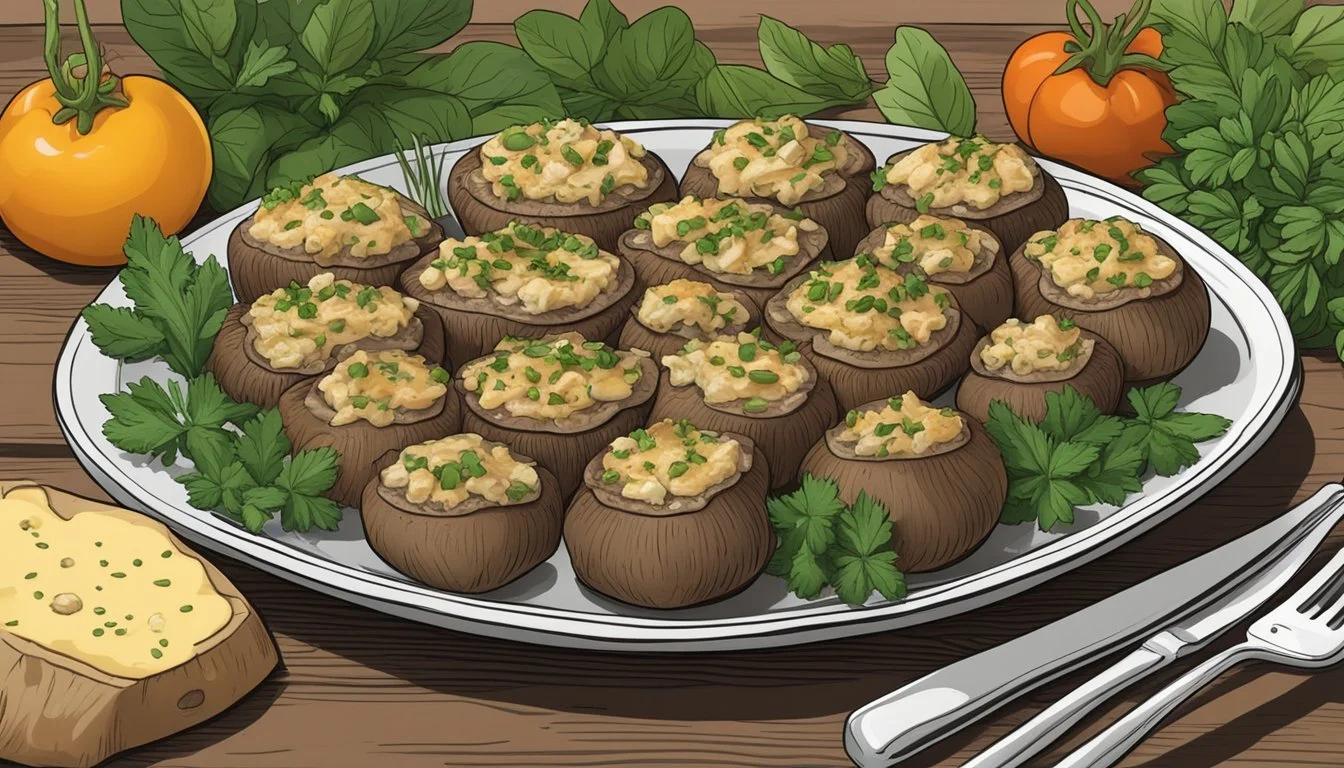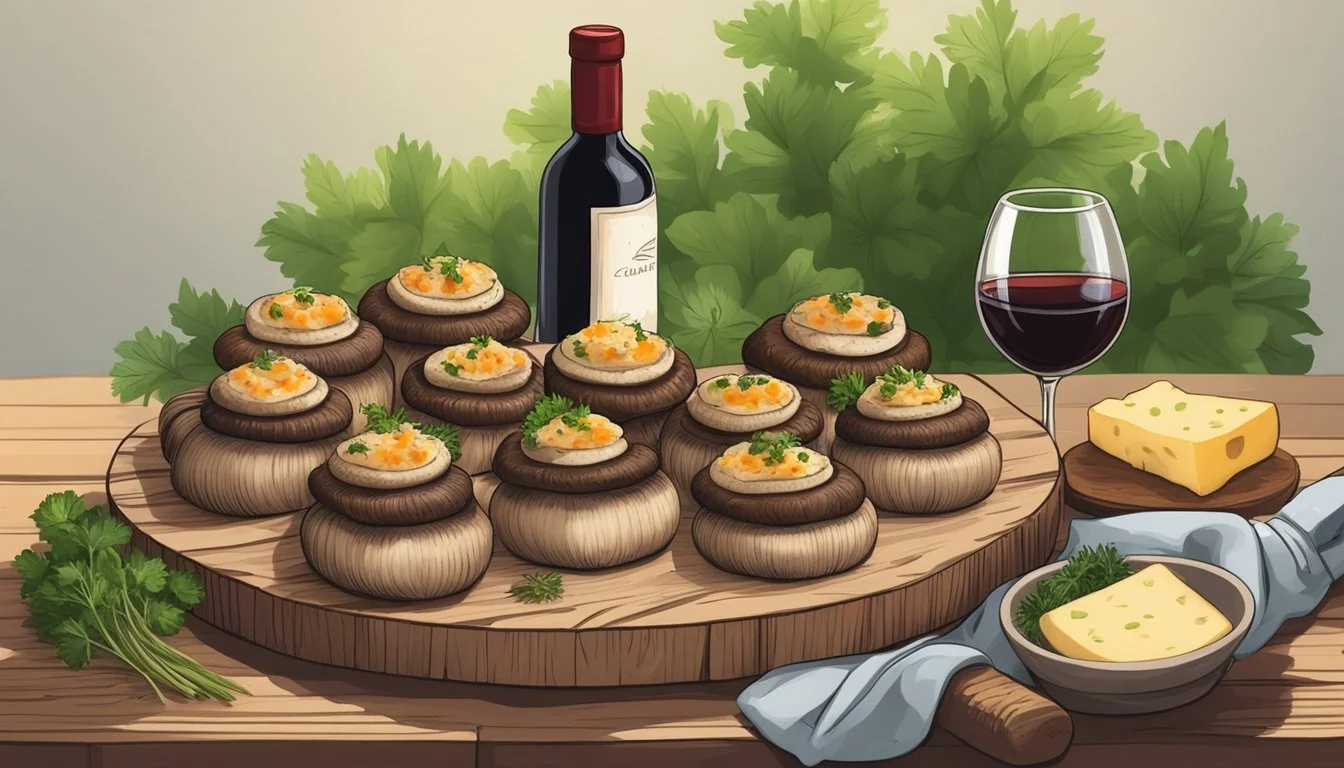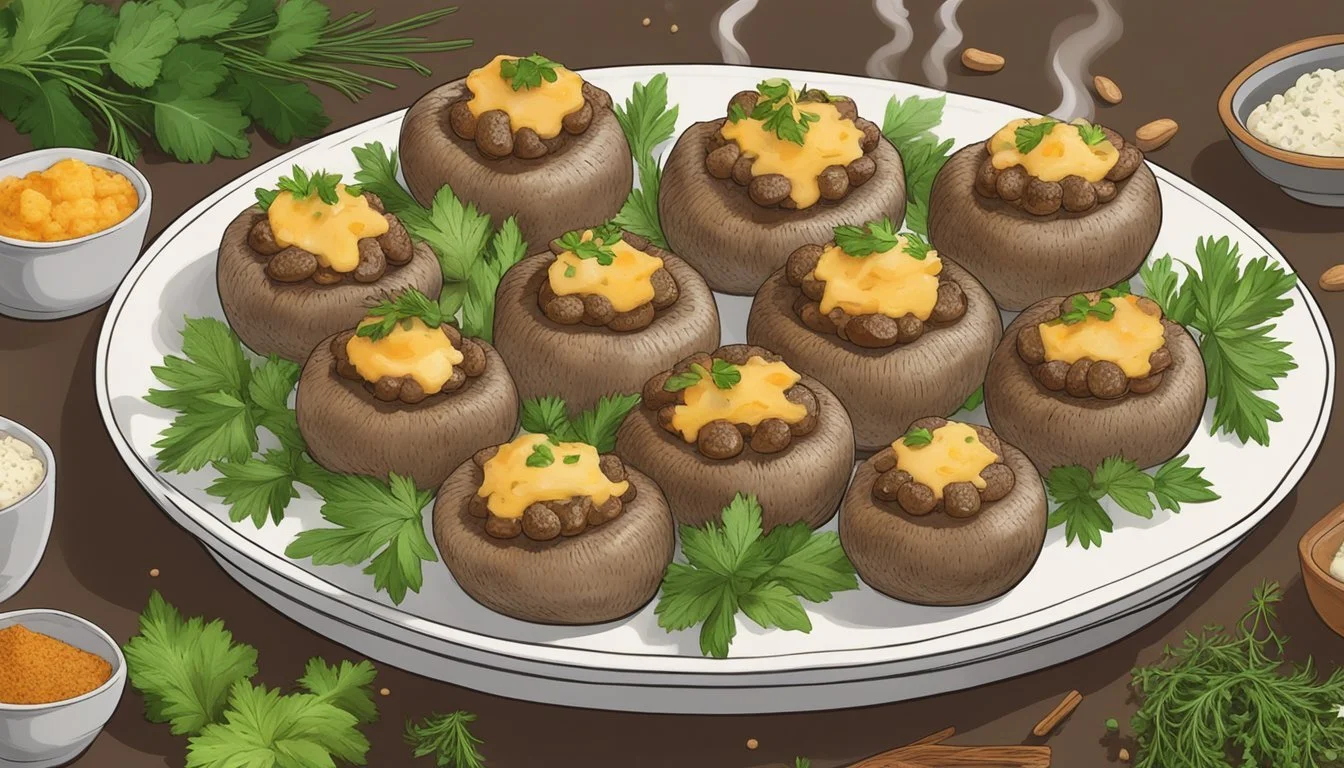How Long Do Beef and Cheese Stuffed Mushrooms Last?
A Storage Guide
Beef and cheese stuffed mushrooms offer a delicious and hearty appetizer or side dish perfect for any occasion. The combination of juicy beef, rich cheese, and tender mushrooms makes them a favorite among many. When properly stored in the refrigerator, beef and cheese stuffed mushrooms can last for up to 3-4 days.
To maximize the shelf life of your stuffed mushrooms, ensure they are kept in an airtight container and placed in the coldest part of the refrigerator. If you're considering prepping in advance or dealing with leftovers, knowing how to store them correctly will help maintain their delicious flavor and texture. Reheating them gently in the oven is recommended to preserve their quality.
Essentials of Stuffed Mushrooms
Stuffed mushrooms are a delicious and versatile appetizer. Critical to their success are the choice of ingredients and the method of preparing the mushroom caps and stems.
Choosing Ingredients for Stuffing
Selecting high-quality ingredients elevates the flavor of stuffed mushrooms. Opting for fresh, large portobello or cremini mushrooms provides a good base.
Beef should be lean and well-seasoned with Italian seasoning, salt, and pepper. Cheese options like mozzarella, parmesan, or cheddar enhance the richness.
Incorporating fresh herbs such as parsley, basil, or thyme adds depth. Breadcrumbs help bind the filling, and using freshly made breadcrumbs can make the texture more pleasant.
Garlic and onions, sautéed until soft and fragrant, contribute a savory backbone to the stuffing. Olive oil is recommended for brushing the mushroom caps to enhance their flavor and prevent drying during baking.
Preparing Mushroom Caps and Stems
The preparation of mushroom caps and stems is essential. Mushroom caps should be cleaned gently to remove any dirt without soaking them in water, which can make them soggy.
Removing and finely chopping the mushroom stems is crucial, as they will be part of the stuffing mixture.
Brushing the caps with olive oil before stuffing ensures they stay moist. Arranging the mushrooms on a baking sheet lined with parchment paper or foil helps in even cooking and easy cleanup.
For even cooking, there should be some space between each stuffed mushroom on the baking sheet. This allows hot air to circulate and cook the mushrooms uniformly. Following these steps guarantees a delicious and aesthetically pleasing appetizer.
Stuffing and Cooking Techniques
When preparing beef and cheese stuffed mushrooms, the techniques used in mixing the filling and baking are crucial to achieving a flavorful and perfectly cooked dish.
Mixing the Filling
Start by browning ground beef in a skillet over medium-high heat until there is no pink left. Set aside the browned beef. In the same skillet, melt butter and add chopped mushroom stems, onions, and a pinch of salt. Cook until the onions are soft and fragrant, around five minutes.
Add minced garlic and herbs, cooking for another minute until the garlic becomes fragrant. Combine the browned beef with this mixture. For a cheesy touch, mix in shredded cheese, ensuring it melds well with the other ingredients.
Baking Stuffed Mushrooms
Preheat the oven to 375°F (190°C). Carefully stuff each mushroom cap with the beef and cheese filling, taking care not to overstuff. Arrange the stuffed mushrooms on a baking sheet lined with parchment paper to prevent sticking.
Place the baking sheet in the oven and bake for about 15-20 minutes. The mushrooms should be tender, and the filling should be golden brown and bubbling. If desired, adding a few minutes to the baking time can ensure a crispier topping.
Storing Beef and Cheese Stuffed Mushrooms
To ensure beef and cheese stuffed mushrooms remain safe to eat and maintain their quality, it's crucial to store them properly. They can be kept in the fridge for short-term storage and frozen for longer preservation.
Refrigeration Best Practices
Store beef and cheese stuffed mushrooms in an airtight container to lock in freshness and prevent moisture from escaping. They should be placed in the main compartment of the fridge at a temperature below 40°F (4°C).
Leftover stuffed mushrooms should be consumed within 3 to 4 days to avoid spoilage. If using plastic wrap, ensure the mushrooms are tightly wrapped before placing them in an airtight container to provide an extra layer of protection.
Freezing for Long-Term Storage
For long-term storage, flash-freeze the stuffed mushrooms individually on a baking sheet to prevent sticking. Once frozen, transfer them to a freezer-safe airtight container or heavy-duty freezer bag.
Label the containers with the freezing date, and use the stuffed mushrooms within 2 to 3 months. To reheat, place the mushrooms in the oven directly from the freezer at 350°F (175°C) until heated through, avoiding microwave thawing to maintain texture.
Nutrition and Dietary Considerations
Stuffed mushrooms, particularly those filled with beef and cheese, can offer a nutritious balance of proteins, fats, and carbohydrates. When considering different dietary needs, options like vegetarian or low-carb variations can also be made to accommodate various preferences.
Balancing Proteins and Carbohydrates
Beef and cheese-stuffed mushrooms are protein-rich due to ingredients like ground beef and cheese.
Ingredient Approx. Protein Content (per serving) Ground beef (3 oz) 21 grams Cheese (1 oz) 7 grams
On the carbohydrate side, breadcrumbs are often used, which add about 5 grams of carbs per tablespoon. To maintain a balanced nutritional intake, it's important to consider the portion sizes and the overall composition of the meal.
Mushrooms themselves are low in carbs and rich in fiber, contributing just a couple of grams of carbohydrates per serving. This can help regulate blood sugar levels. Combining these with healthy fats from cheese offers a meal that sustains energy levels longer.
Options for Vegetarian and Low Carb Diets
For a vegetarian option, substitutes like tofu, tempeh, or beans can be used instead of ground beef. These ingredients provide comparable protein content and can be seasoned similarly to achieve a desirable flavor profile.
For vegan diets, non-dairy cheese alternatives paired with protein-rich plants will offer a cruelty-free, tasty option.
In terms of low-carb substitutions, options like using almond flour or ground flaxseed instead of breadcrumbs can reduce the carbohydrate content significantly. Additionally, omitting or reducing the cheese can lower the fat content, making the dish suitable for those who require a lower fat intake due to health conditions.
Adapting the stuffed mushrooms recipe to various dietary needs can make this dish an inclusive and nutritious choice for diverse groups.
Customizing Your Stuffed Mushrooms
One effective way to make your stuffed mushrooms unique is by experimenting with different fillings, cheeses, and spices. Incorporate Italian seasoning, or mix in various cheeses like mozzarella, parmesan, or cheddar for richer flavors.
Variations and Substitutions
For stuffed mushrooms, various ingredients can be swapped or added to suit different tastes. Instead of the typical ground beef, turkey, sausage, or vegetarian meat substitutes can be used. To add vegetables, include finely chopped bell peppers, spinach, or zucchini.
For a twist, consider adding bacon or prosciutto for a salty kick. Stuffed portobello mushrooms are a larger option, providing more room for additional ingredients. Experiment with different herbs and spices to enhance the profile. Italian seasoning, basil, or oregano can deepen the flavor.
Incorporating Different Cheeses and Spices
Cheese is a key component for stuffed mushrooms, affecting both taste and texture. Mozzarella is popular for its meltability, while parmesan provides a sharp, salty flavor. Cheddar offers a robust, creamy taste that pairs well with beef.
To create a more complex profile, layer different cheeses, such as Swiss or Gouda. For spices, consider paprika, thyme, or rosemary. A pinch of cayenne pepper can add a gentle heat, making each bite more exciting. Customize these elements to match your desired flavor and texture.
Serving Suggestions and Pairings
Beef and cheese stuffed mushrooms can be enjoyed in various settings. Whether served as appetizers or the main course, these mushrooms pair well with several complementary dishes.
As Appetizers or a Main Course
Beef and cheese stuffed mushrooms make excellent appetizers. They can be served at gatherings or parties, providing a flavorful start to the meal. Their hearty filling makes them ideal for satisfying guests without being overly heavy.
For a main course, stuffed portobello mushrooms are perfect. Their larger size accommodates more filling, making them substantial enough to serve as the centerpiece of a meal. They pair well with marinara sauce or a simple green salad on the side.
Complementary Dishes and Sides
When paired with other dishes, stuffed mushrooms shine even more. For a classic combination, serve them alongside marinara sauce or incorporate them into a pizza or spaghetti meal.
Fresh salads, especially those with sweet strawberries, tender baby spinach, and salty goat cheese, are a great complement. For a heartier option, roasted vegetables or garlic bread make excellent sides. These options balance the richness of the stuffed mushrooms and enhance the dining experience.
Troubleshooting Common Issues
When preparing beef and cheese stuffed mushrooms, avoiding soggy mushrooms and achieving a perfect cheese melt are essential for a delicious result. Specific techniques can help ensure these issues are addressed effectively.
Preventing Soggy Mushrooms
To avoid soggy mushrooms, start by preheating your oven properly. Consistent heat promotes even cooking and prevents excess moisture.
Avoid overcrowding. When mushrooms are too close together, moisture can't escape, resulting in a soggy texture. Ensure they have enough space on the baking sheet for air to circulate.
Brush oil lightly on the mushroom caps rather than soaking them. Excess oil can make the mushrooms soggy.
Use a rack or perforated sheet to allow moisture to escape from the mushrooms during baking. This helps them stay firm.
Before stuffing the mushrooms, remove any excess moisture by slightly pre-cooking or blotting the caps with a paper towel.
Achieving the Perfect Cheese Melt
For a perfect cheese melt, the type and placement of the cheese are critical. Choose the right cheese. Mozzarella, gouda, or cheddar are excellent choices due to their melting properties.
Shred or crumble cheese before using. Pre-shredded cheese melts quicker and more evenly.
Cover the mushrooms with foil for the first part of the baking process. This allows the cheese to melt without burning.
Remove the foil near the end of cooking. This step helps the cheese achieve a golden brown, slightly crispy top.
Finally, avoid overbaking. Overcooking can cause the cheese to become rubbery. Bake just until the filling is set and cheese is melted and golden.
Advanced Tips and Techniques
Proper storage techniques and how professional cooking lessons can refine your method for making beef and cheese stuffed mushrooms.
Professional Cooking Lessons
Professional cooking lessons can provide a deeper insight into creating the perfect beef and cheese stuffed mushrooms. During these lessons, the participants will learn precision in chopping ingredients, managing cooking times, and balancing flavors. Knife skills, for example, ensure uniform sized ingredients, aiding in even cooking.
In addition, they cover sanitation practices critical for extending the shelf life of stuffed mushrooms by avoiding contamination. Mastering temperature control through these lessons ensures that the mushrooms are cooked to the correct internal temperature, enhancing both food safety and taste.
Moreover, tips on effective refrigeration and freezing techniques are often shared, ensuring that prepared mushrooms maintain their flavor and texture for longer periods.

